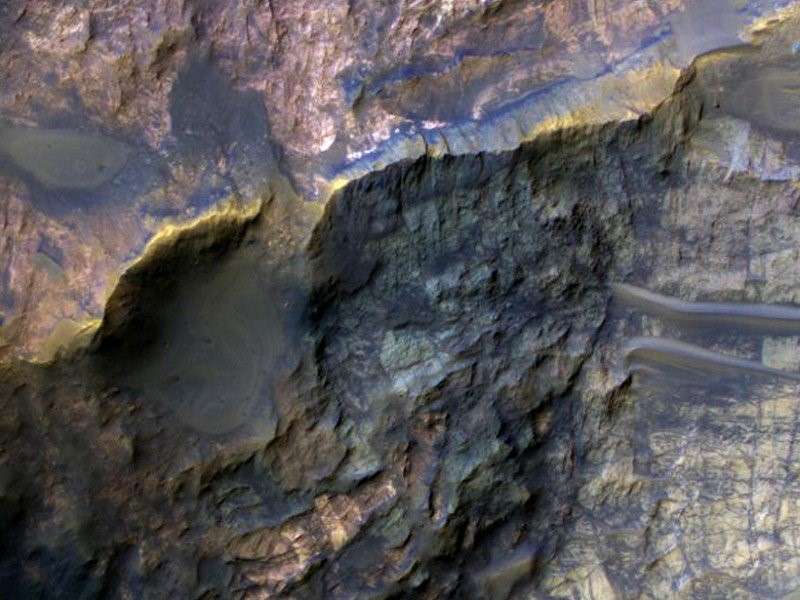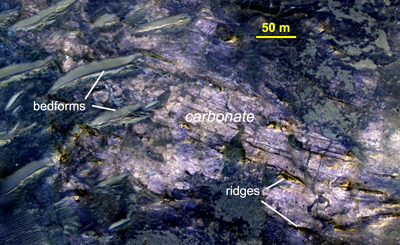Potential habitats for early life on Mars

Recently discovered evidence of carbonates beneath the surface of Mars points to a warmer and wetter environment in that planet's past. The presence of liquid water could have fostered the emergence of life.
A new study by James Wray at the Georgia Institute of Technology and Janice Bishop of the SETI Institute, as well as other collaborators, has found evidence for widespread buried deposits of iron- and calcium-rich Martian carbonates, which suggests a wetter past for the Red Planet.
"Identification of these ancient carbonates and clays on Mars represents a window into history when the climate on Mars was very different from the cold and dry desert of today," notes Bishop.
The fate of water on Mars has been energetically debated by scientists because the planet is currently dry and cold, in contrast to the widespread fluvial features that etch much of its surface. Scientists believe that if water did once flow on the surface of Mars, the planet's bedrock should be full of carbonates and clays, which would be evidence that Mars once hosted habitable environments with liquid water. Researchers have struggled to find physical evidence for carbonate-rich bedrock, which may have formed when carbon dioxide in the planet's early atmosphere was trapped in ancient surface waters. They have focused their search on Mars' Huygens basin.

This feature is an ideal site to investigate carbonates because multiple impact craters and troughs have exposed ancient, subsurface materials where carbonates can be detected across a broad region. And according to study led James Wray, "outcrops in the 450-km wide Huygens basin contain both clay minerals and iron- or calcium-rich carbonate-bearing rocks."
The study has highlighted evidence of carbonate-bearing rocks in multiple sites across Mars, including Lucaya crater, where carbonates and clays 3.8 billion years old were buried by as much as 5 km of lava and caprock.
The researchers, supported by the SETI Institute's NASA Astrobiology Institute (NAI) team, identified carbonates on the planet using data from the Compact Reconnaissance Imaging Spectrometer for Mars (CRISM), which is on the Mars Reconnaissance Orbiter. This instrument collects the spectral fingerprints of carbonates and other minerals through vibrational transitions of the molecules in their crystal structure that produce infrared emission. The team paired CRISM data with images from the High Resolution Imaging Science Experiment (HiRISE) and Context Camera (CTX) on the orbiter, as well as the Mars Orbiter Laser Altimeter (MOLA) on the Mars Global Surveyor, to gain insights into the geologic features associated with carbonate-bearing rocks.
The extent of the global distribution of martian carbonates is not yet fully resolved and the early climate on the Red Planet is still subject of debate. However, this study is a forward step in understanding the potential habitability of ancient Mars.
More information: James J. Wray et al. Orbital evidence for more widespread carbonate-bearing rocks on Mars, Journal of Geophysical Research: Planets (2016). DOI: 10.1002/2015JE004972
Provided by SETI Institute





















